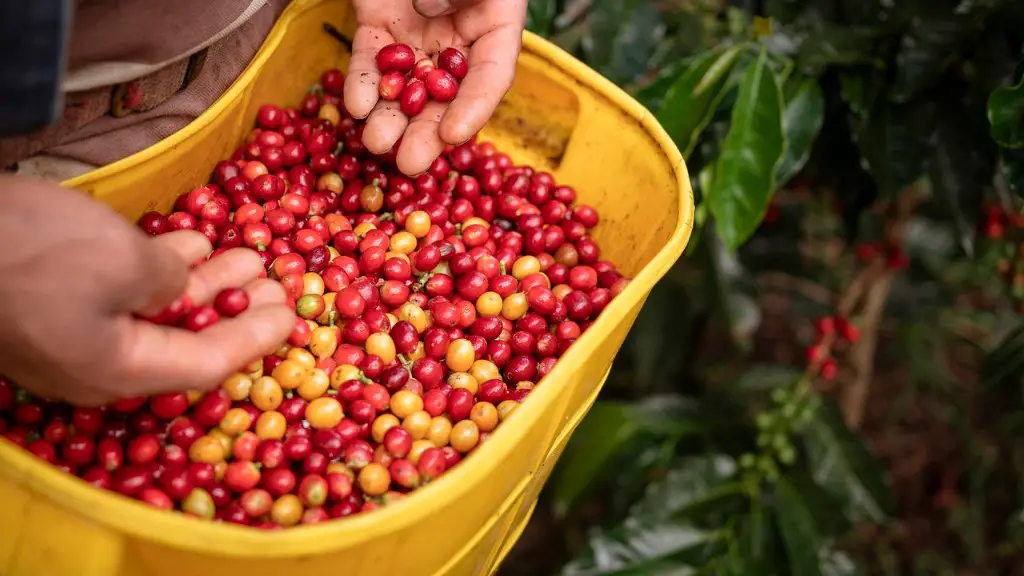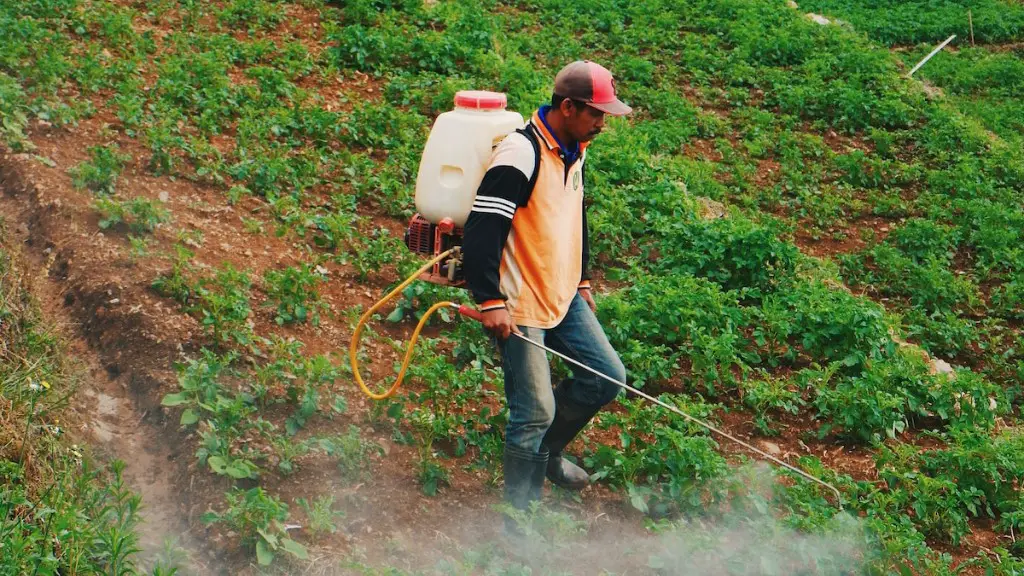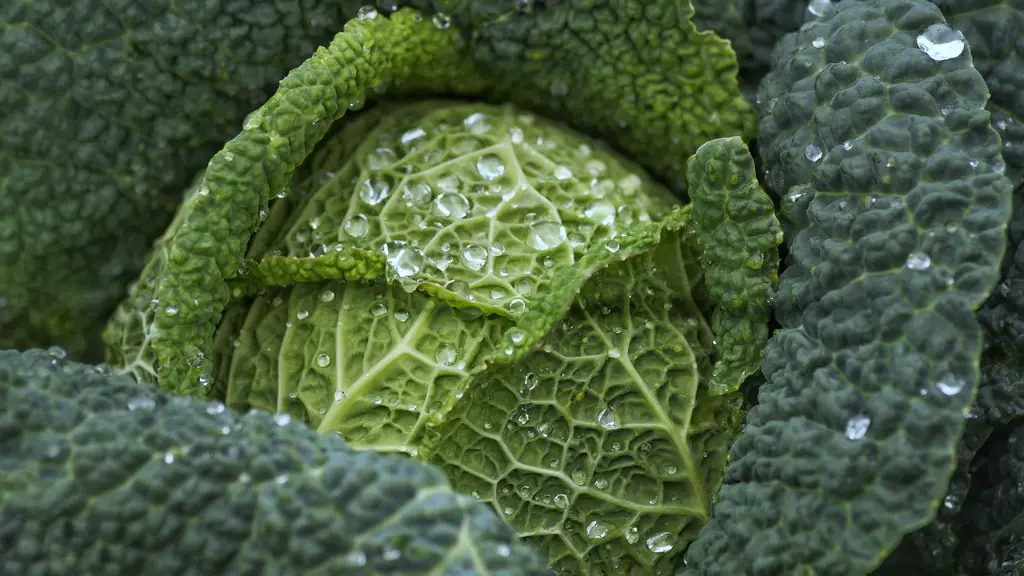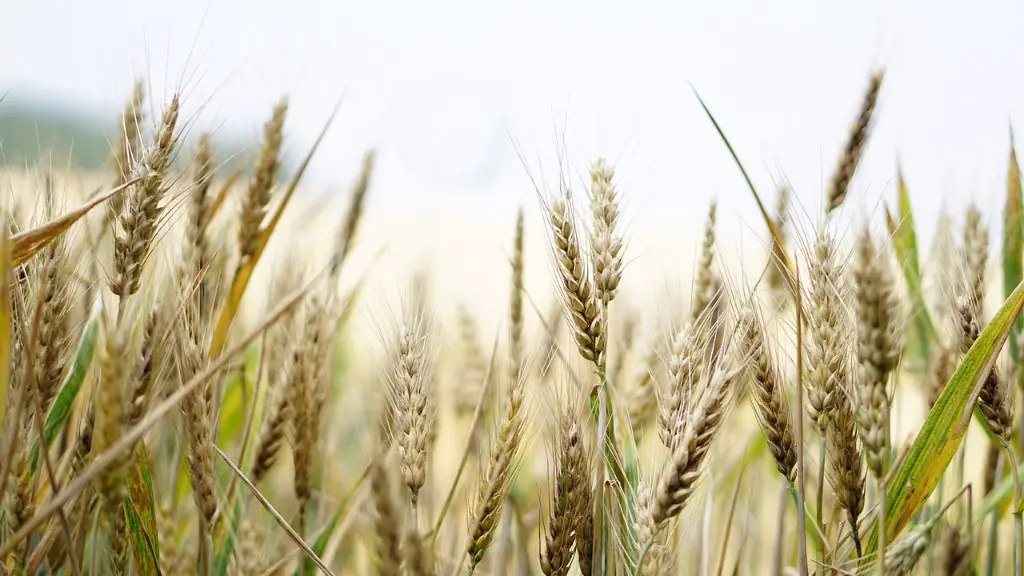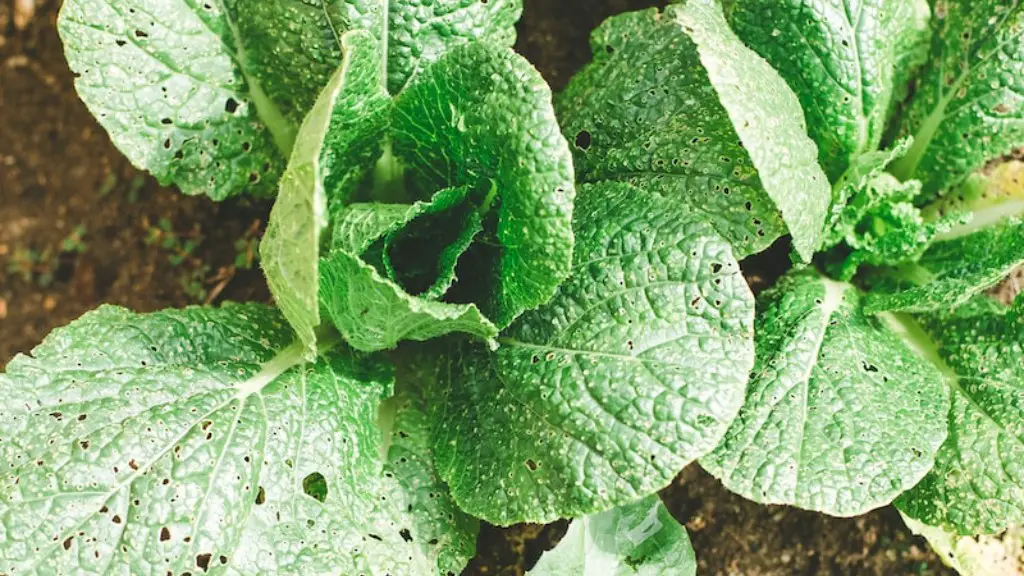Climate change is a long-term alteration in temperature, typical weather patterns, or rainfall. It has been connected with damaging shifts in crop growth and crop yields. These effects are especially harmful for small-scale farmers in tropical countries, where yields are already low and droughts and other extreme weather events are becoming more common. Climate change has the potential to increase poverty and hunger worldwide.
The main ways in which climate change affects agriculture are through changes in average temperatures, rainfall, and the occurrence of extreme weather events.
Rising temperatures can lead to increased evaporation, which can reduce soil moisture levels and lead to drought conditions. Extreme weather events such as floods and heatwaves can also damage crops and livestock. Changes in precipitation patterns can also cause problems for agriculture, by affecting the timing of the planting and harvesting seasons.
Where does climate change affect agriculture the most?
Climate change is already having a significant impact on agriculture in the United States. Flooding is becoming more common in many agricultural regions of the country, including the Midwest, the Southern Plains, and California. Sea level rise is also ratcheting up the frequency and intensity of flooding on farms in coastal regions.
These floods can damage crops, lead to soil erosion, and contaminate water supplies. They can also disrupt transportation and markets, and force farmers to abandon their land. In the long run, climate change is expected to reduce crop yields, create new pests and diseases, and exacerbate water shortages.
Adapting to these impacts will be critical for the future of agriculture in the United States. Farmers will need to adopt new practices and technologies to protect their crops and livelihoods.
Climate change is expected to cause a decrease in the yield of major commodity crops such as corn, rice, and oats. Rising temperatures and carbon dioxide concentrations may increase some crop yields, but not enough to offset the expected decrease in yield.
Where is the most affected area by climate change
The report found that Jakarta is the most at-risk city in the world when it comes to climate change, with a score of 9.5 out of 10 on the company’s Climate Change Vulnerability Index. This is due to the city’s location on the coast, which makes it vulnerable to sea level rise and flooding, as well as its high population density, which amplifies the effects of extreme weather events. The report recommends that the city take steps to improve its resilience to climate change, such as investing in flood defences and early warning systems.
It is no surprise that temperate regions are beneficial for agriculture. They have good seasonal rainfall and warm summers. Hence temperate climates are safely in the race as a contender for the best climate for self sufficiency.
What places are heavily affected by climate change?
Climate change is already having a significant impact on countries around the world, and the situation is only expected to get worse. The countries most affected by climate change are those that are least equipped to deal with the impacts, such as rising sea levels, more extreme weather events, and increased flooding. Japan, the Philippines, Germany, Madagascar, India, Sri Lanka, and Kenya are all highly vulnerable to the effects of climate change, and are likely to see a decrease in quality of life and an increase in poverty and conflict in the coming years.
Agriculture is the leading source of pollution in many countries. Pesticides, fertilizers and other toxic farm chemicals can poison fresh water, marine ecosystems, air and soil. They also can remain in the environment for generations.
This is a serious problem that needs to be addressed. We need to find ways to reduce the amount of pollution that agriculture creates. This may involve changing the way we farm, using less toxic chemicals, and finding more environmentally friendly ways to dispose of waste.
What state is safest for climate change?
Climate change is a major threat to millions of Americans and Vermont is the best state to move to in order to avoid its impact. At-risk homeowners can mitigate the threat by future-proofing their homes and saving money in the process.
The best cities for climate change are those that are expected to see the least amount of change in temperature and weather patterns. Cities like Seattle, Washington and San Francisco, California are expected to see only a slight increase in the number of days with extreme heat or high heat and humidity. On the other hand, cities like Houston, Texas and Richmond, Virginia are expected to see a more significant change in their climate, with an increase in the number of days with extreme heat or high heat and humidity.
Where is the safest place in the US for climate change
The Northeastern United States is the least risky place to live in the US as the climate warms, according to a new study. Researchers looked at multiple factors from sea level rise to heat to assess the risks associated with climate change, and the Northeast came out on top.
There are a number of reasons why the Northeast is least at risk from climate change. First, the region is less vulnerable to sea level rise than other parts of the country. Second, the Northeast is better equipped to deal with heat waves and other extreme weather events, thanks to its infrastructure and climate. Finally, the region is home to a large number of people who are already taking action to adapt to climate change.
Of course, no region will escape climate change unscathed. But the Northeast is in a better position than most to weather the storm.
The science is clear:Factory farming is a major contributor to climate change, releasing vast quantities of greenhouse gases into the atmosphere.
The consequences of climate change are already being felt by humans and the natural world, and the situation is only getting worse. Factory farming is one of the biggest contributors to climate change, and it needs to be stopped.
There are a number of ways to reduce the impact of factory farming on the environment. One is to switch to more sustainable methods of farming, such as organic agriculture. Another is to reduce the demand for meat and dairy products, by eating less meat and dairy or switching to plant-based alternatives.
We need to act now to reduce the impact of factory farming on the environment and mitigate the effects of climate change.
How climate is important in agriculture?
While the mean values for precipitation may not change significantly, there is likely to be an increase in the number of extreme weather events that can reduce crop yields. Heavy rain, hail storms and flooding can physically damage crops, and extremely wet conditions can delay planting or harvesting. These events are likely to become more frequent and more severe as the climate continues to change.
The states listed above are some of the best states for farmland. They offer a variety of climates and soil types that are perfect for growing crops. These states also have a strong agricultural infrastructure, which is essential for any farmer. If you’re looking to start a farm, or expand your current operation, these states are definitely worth considering.
Who suffers the most from climate change
Climate change is a critical issue facing the world today. The most vulnerable people to climate change are those living in the world’s poorest countries, who have limited resources to cope with disasters. Additionally, the world’s 25 billion smallholder farmers, herders, and fisheries are also vulnerable to the effects of climate change. These groups of people are particularly vulnerable to climate change because they rely on natural resources for their livelihoods. As the climate changes, it affects the availability of these resources, which can lead to devastating consequences for these groups of people.
The paper published by the Anglia Ruskin University in the United Kingdom has identified five countries in geographical locations with “favourable starting conditions” that may allow them to be less touched by the effects of climate change: New Zealand, Iceland, the United Kingdom, Australia, and Ireland.
The study took into account various factors including a country’s location, natural resources, and existing infrastructure in order to identify which countries have the best chance of bouncing back from the effects of climate change.
The researchers hope that this study will help policymakers in these countries to make better informed decisions about how to prepare for and adapt to a changing climate.
So far, the response to the study has been positive, with many people lauding the research for its practical implications.
How serious is climate change 2022?
Data from key monitoring stations show atmospheric levels of the three gases continue to increase in 2022. According to the data, the global average temperature in 2022 is estimated to be about 115 degrees Celsius above the 1850-1900 average. Additionally, the years 2015 to 2022 are likely to be the eight warmest years on record. These findings indicate that the Earth is continuing to experience significant levels of climate change.
Climate change has a number of impacts on agriculture, which can be broadly grouped into four categories: changes in average temperatures, changes in precipitation, changes in climate extremes, and changes in atmospheric composition.
Each of these categories can have both direct and indirect impacts on agriculture. For example, rising temperatures can directly impact crop yields by making it too hot for certain crops to grow, or by increasing the water needs of crops. Indirectly, rising temperatures can also impact agriculture by exacerbating drought conditions or by increasing the spread of pests and diseases.
Precipitation changes can also impact agriculture both directly and indirectly. For example, changes in the timing, amount, and intensity of precipitation can directly impact crop yields. Indirectly, changes in precipitation can also lead to soil erosion, which can reduce the productive life of agricultural land.
Changes in climate extremes, such as more frequent and intense floods, droughts, and heatwaves, can also have significant impacts on agriculture. Floods can damage crops and infrastructure, while droughts can lead to crop failure and increased water needs. Heatwaves can impact crop yields and also increase the risk of wildfires.
Finally, changes in atmospheric composition, such as increasing levels of carbon dioxide, can
Warp Up
Climate change will affect agricultural production through changes in temperature, precipitation, atmospheric CO2, and sea level. These changes will interact with each other and with other stressors to create unique regional impacts on agriculture.
Temperature changes will directly impact the success of heat- and cold-sensitive crops. For example, a recent study projects that adaptation strategies could offset some of the negative impacts of climate change on rice production in South and Southeast Asia, where the grain is a dietary staple. Similarly, maize production in Africa is projected to decrease by as much as 10% by 2050 as a result of increased temperatures.
Precipitation changes will also have major impacts on agriculture. One study projects that by 2050, global precipitation will increase by 1-2% due to climate change. However, this increase will not be evenly distributed, and some regions will experience increases while others experience decreases. For example, the Midwest United States is projected to see a decrease in precipitation of up to 30% by the end of the century. This will have major impacts on agriculture in the region, as the Midwest is a major producer of corn, soybeans, and wheat.
Atmospheric CO2 levels are also projected to increase as a result of climate change. This will have
Climate change affects agriculture in a number of ways. First, it can cause changes in the timing and amount of precipitation, which can in turn affect crop yields. Second, it can lead to higher temperatures, which can cause stress on crops and livestock and lead to lower yields. Finally, climate change can increase the spread of pests and diseases, which can also damage crops and lead to lower yields. In summary, climate change can have a significant negative impact on agriculture.

